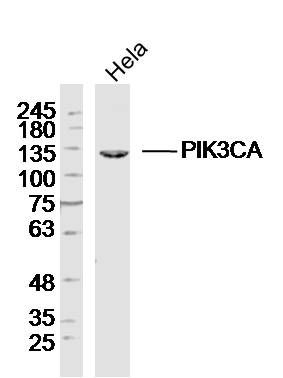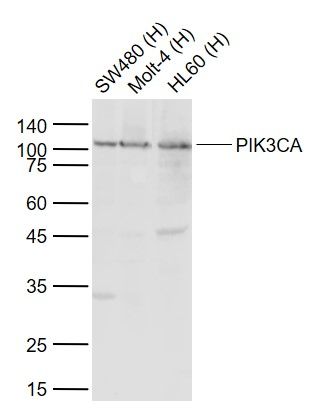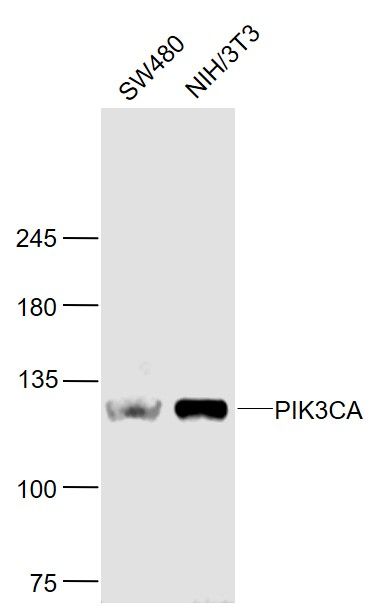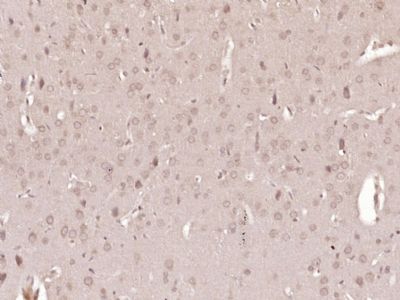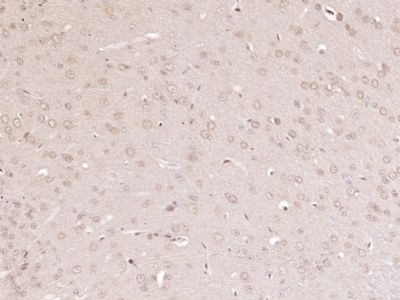[IF=3.263] Yang Yu et al. Vaccarin promotes proliferation of and milk synthesis in bovine mammary epithelial cells through the Prl receptor-PI3K signaling pathway. Eur J Pharmacol. 2020 Aug 5;176:173190. WB ; dairy cow.
[IF=1.98] Yang G et al. Ginsenoside Rb1 Prevents Dysfunction of Endothelial Cells by Suppressing Inflammatory Response and Apoptosis in the High-Fat Diet Plus Balloon Catheter-Injured Rabbit Model via the G Protein-Coupled Estrogen Receptor-Mediated Phosphatidylinositol 3-Kinases (PI3K)/Akt Pathway. Med Sci Monit. 2019 Oct 3;25:7407-7417. WB ; Rabbit.
[IF=3.571] Li X et al. Lysine enhances the stimulation of fatty acids on milk fat synthesis via the GPRC6A-PI3K-FABP5 signaling in bovine mammary epithelial cells. J Agric Food Chem. 2019 Jun 26;67(25):7005-7015. WB ; Cow.
[IF=3.296] Han B et al. 8-Cetylcoptisine, a new coptisine derivative, induces mitochondria-dependent apoptosis and G0/G1 cell cycle arrest in human A549 cells.(2018)Chem Biol Interact.;299:27-36. WB ; Mouse.
[IF=2.88] Paul-Samojedny, Monika, et al. "Knockdown of AKT3 (PKBγ) and PI3KCA Suppresses Cell Viability and Proliferation and Induces the Apoptosis of Glioblastoma Multiforme T98G Cells." BioMed Research International 2014 (2014). WB ; Human.
[IF=3.329] Zhang Y et al. Overexpressed CES2 has prognostic value in CRC and knockdown CES2 reverses L-OHP-resistance in CRC cells by inhibition of the PI3K signaling pathway. Exp Cell Res. 2020 Jan 22:111856. WB ; Human.
[IF=2.976] Wang W et al. Deoxypodophyllotoxin inhibits cell viability and invasion by blocking the PI3K/Akt signaling pathway in human glioblastoma cells.Oncol Rep. 2019 Apr;41(4):2453-2463. WB ; Human.
[IF=3.571] Yu M et al. Taurine promotes milk synthesis via the GPR87-PI3K-SETD1A signaling in BMECs. J Agric Food Chem. 2019 Feb 20;67(7):1927-1936. WB ; Mouse.
[IF=1.935] Ou X et al. Desumoylating Isopeptidase 2 (DESI2) Inhibits Proliferation and Promotes Apoptosis of Pancreatic Cancer Cells through Regulating PI3K/AKT/mTOR Signaling Pathway. (2018)Pathol. Oncol. Res. Nov 8. WB ; Human.
[IF=3.412] Qi H et al. Methionine Promotes Milk Protein and Fat Synthesis and Cell Proliferation via the SNAT2-PI3K Signaling Pathway in Bovine Mammary Epithelial Cells.(2018) J Agric Food Chem.66(42):11027-11033. WB ; dairy cow.
